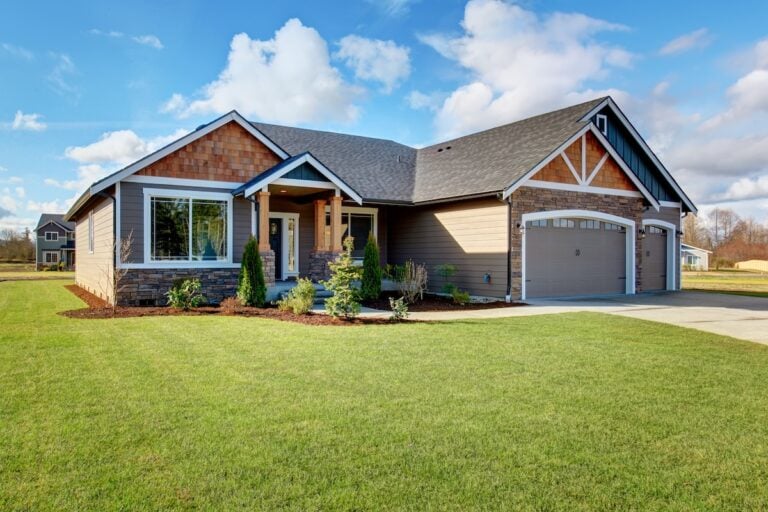
6 Min Read
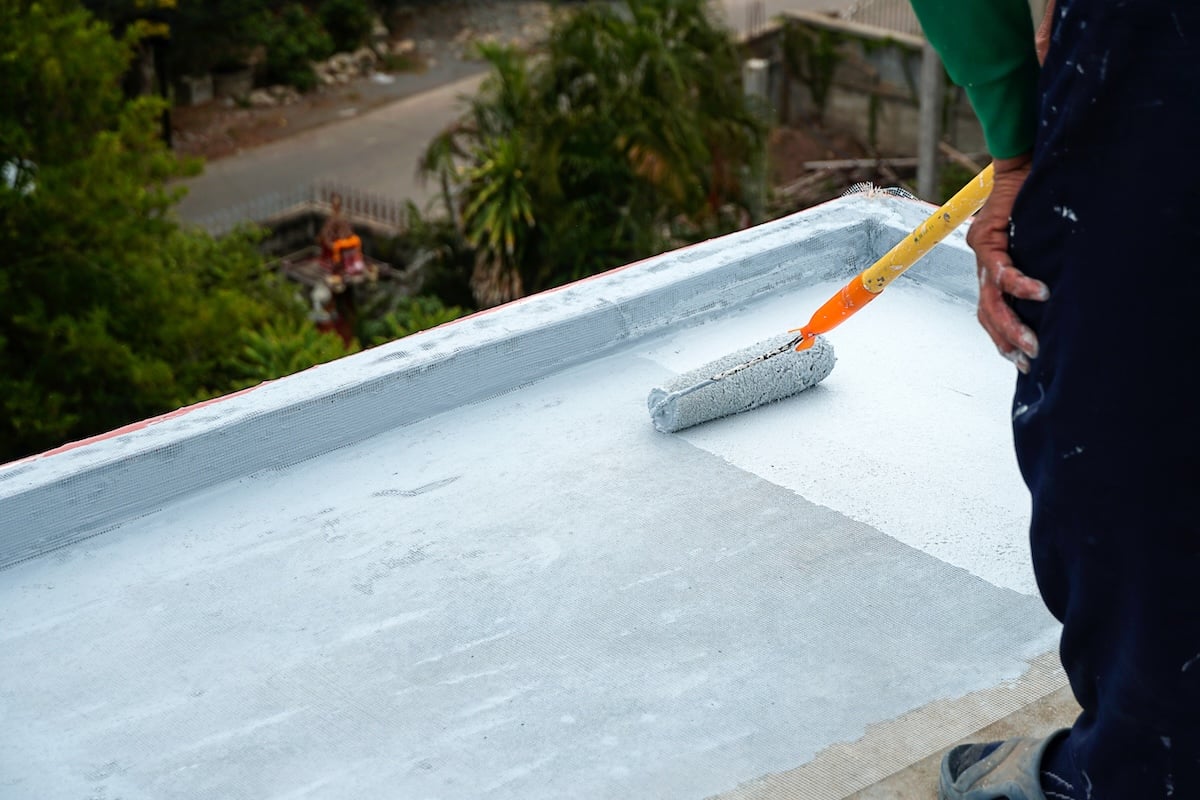
TPO (Thermoplastic Polyolefin) roofing has become increasingly popular for commercial buildings due to its energy efficiency and durability. However, many property owners wonder: can you paint a TPO roof? The answer isn’t straightforward. While it’s technically possible to paint TPO roofing, there are important considerations that could affect your roof’s performance and warranty.
This comprehensive guide covers everything you need to know about painting TPO roofs, including:
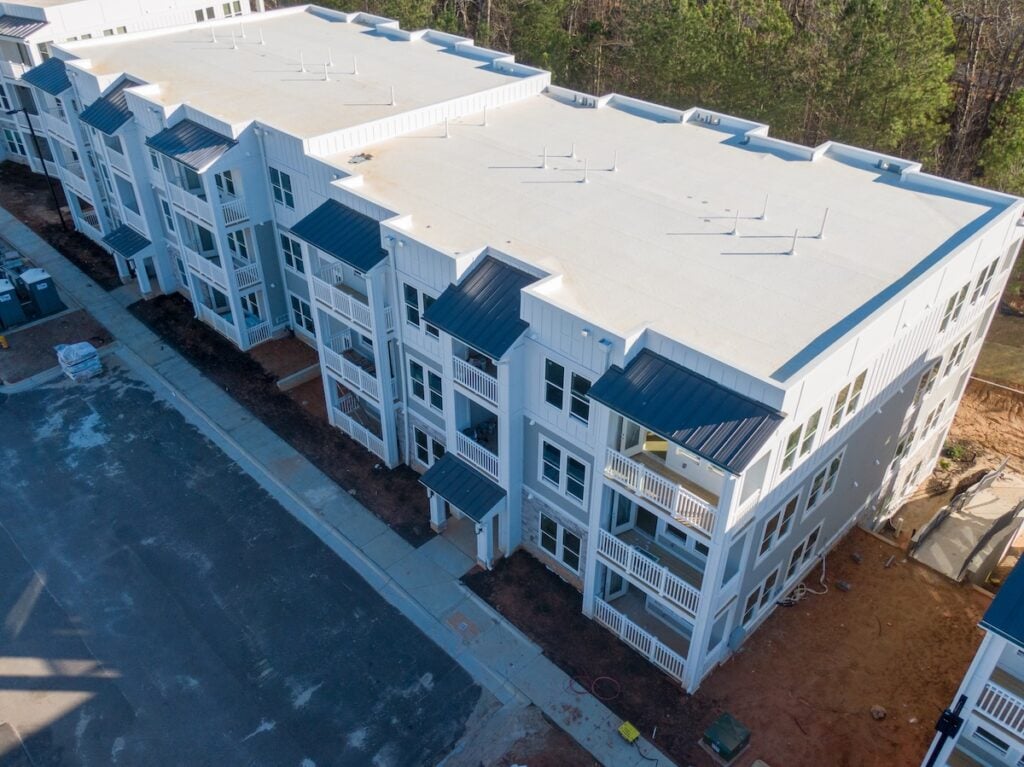
TPO roofing manufacturers design their products to perform optimally without additional coatings or paint. The white TPO membrane already provides excellent solar reflectance, typically reflecting 70-80% of the sun’s rays. This natural reflectivity helps reduce cooling costs and prevents the roof from absorbing excessive heat.
Adding paint to a TPO roof can actually reduce its energy efficiency. Most paints, even light-colored ones, don’t reflect as much solar energy as the original TPO membrane. This reduction in reflectivity can lead to higher cooling costs and increased thermal stress on the roofing system.
Paint adhesion is another significant concern. TPO’s smooth, chemical-resistant surface makes it difficult for paint to bond properly. Without proper adhesion, paint can peel, chip, or bubble, creating an unsightly appearance and potentially exposing the membrane to damage.
Despite the general recommendation against painting TPO roofs, there are specific situations where property owners might consider this option. Understanding these scenarios can help you determine if your situation warrants the risks involved.
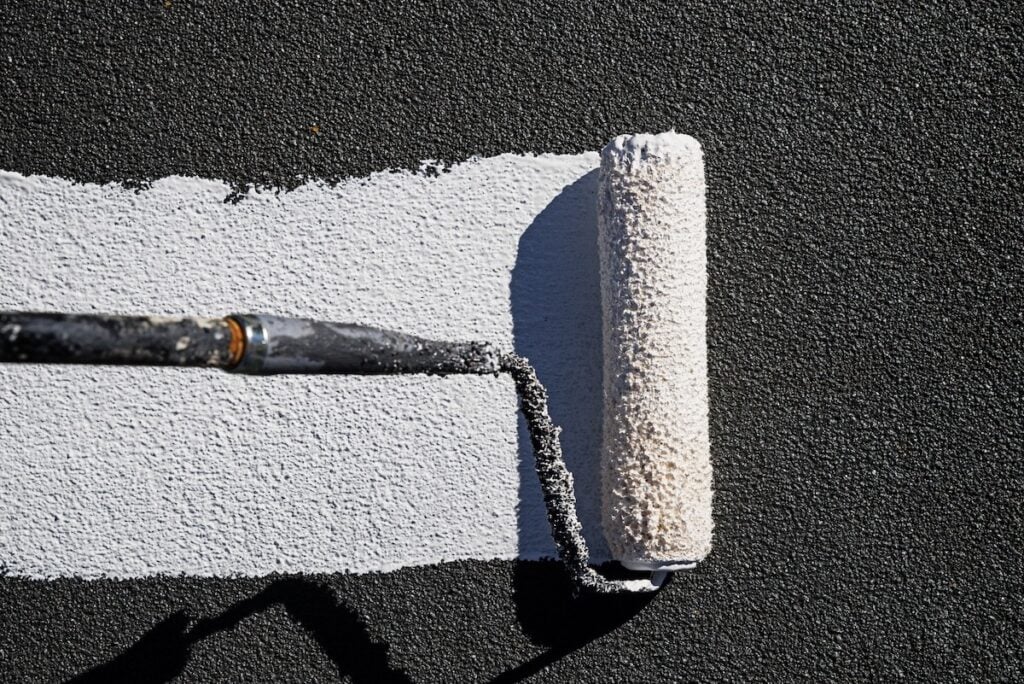
If you’ve carefully considered the risks and decided that painting your TPO roof is necessary, following proper procedures is crucial for the best possible outcome. This process requires specialized materials, careful preparation, and attention to detail.
Before beginning any work, consult with both roofing professionals and paint manufacturers. Some manufacturers produce specialized coatings designed for TPO applications, though these are limited and still may void warranties.
Get multiple professional opinions about your specific situation and explore all alternatives before proceeding with painting.
Start with comprehensive surface cleaning using appropriate TPO cleaners. Remove all dirt, debris, oils, and any biological growth. The surface must be completely clean for any hope of proper paint adhesion.
Allow the roof to dry completely after cleaning. Any moisture trapped under paint will cause adhesion problems and potential membrane damage.
Use only primers specifically designed for TPO or similar thermoplastic surfaces. Standard primers will not provide adequate adhesion. Apply the primer according to manufacturer specifications, paying attention to temperature and humidity conditions.
Allow proper curing time between primer and paint application. Rushing this process significantly increases the risk of paint failure.
Choose paint specifically formulated for thermoplastic roofing materials. Avoid standard exterior paints, as they lack the flexibility and adhesion properties needed for TPO surfaces.
Light colors are preferable to maintain as much reflectivity as possible. Dark colors will significantly increase heat absorption and thermal stress on the roof system.
Paint during optimal weather conditions, typically with temperatures between 50-85°F and low humidity. Avoid painting in direct sunlight or during periods of high wind.
Apply thin, even coats rather than attempting to achieve full coverage in a single application. Multiple thin coats provide better adhesion and durability than fewer thick coats.
Establish a maintenance schedule that includes regular inspections for paint failure, proper cleaning methods that won’t damage the paint, and touch-up procedures for any problems that develop.
Budget for more frequent maintenance and potential complete repainting within a few years, as painted TPO roofs typically require more attention than unpainted membranes.
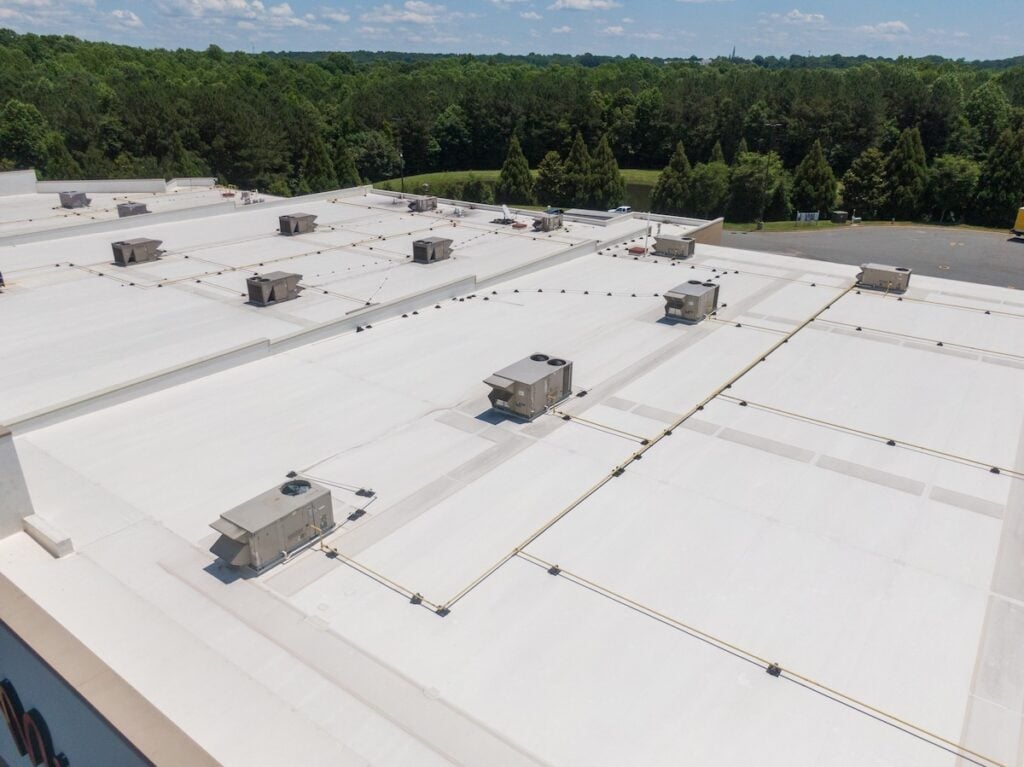
Before painting your TPO roof, consider these alternative solutions that might address your concerns while maintaining the roof’s integrity and warranty.
Many discoloration and aesthetic issues can be resolved through professional cleaning and restoration services. Specialized TPO cleaners can remove stains, biological growth, and environmental deposits that cause an unsightly appearance.
Professional restoration may also include minor repairs and resealing that can extend your roof’s life and improve its appearance without the risks associated with painting.
If your TPO roof has significant aesthetic or performance issues, replacement might be more cost-effective than painting. New TPO installation provides a fresh appearance, full warranty coverage, and optimal energy efficiency.
Replacement also allows you to select from current color options that might better meet your aesthetic requirements.
Some manufacturers produce specialized coating systems designed specifically for TPO roofing. These products differ from standard paints and may provide better compatibility with TPO membranes.
However, even specialized coatings may void warranties and should be carefully evaluated with professional guidance.
At Kingfisher Roofing, we understand the complexities of commercial roofing decisions, including questions about TPO roof modifications. Our team combines over 20 years of industry experience with specialized knowledge of TPO roofing systems to provide expert guidance for your specific situation.
Don’t risk your roof’s performance or warranty with DIY solutions or unqualified contractors. Contact Kingfisher Roofing today to schedule your professional consultation and discover the right solution for your commercial roofing needs.